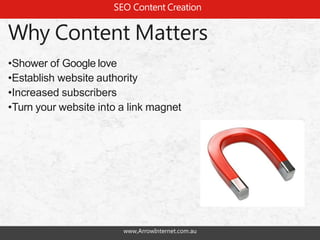
In the ever-evolving world of digital marketing, one thing is clear: the way people search for information is changing. Google’s recent introduction of the Search Generative Experience (SGE) has sent shockwaves through the SEO community. This new AI-powered search feature doesn’t just display links to websites—it generates concise, informative summaries directly in the search results. For bloggers and content creators, this means a fundamental shift in how content is created, optimized, and consumed.
This article will explore what Generative SEO is, why it matters, and how bloggers can adapt to this new era of search. Whether you’re a seasoned publisher or just starting out, understanding and preparing for Generative SEO is essential for staying relevant in 2025 and beyond.
What Is Generative SEO and Why It Matters
Generative SEO refers to the practice of optimizing content to be more easily understood and utilized by generative AI systems like Google’s SGE and OpenAI’s GPT models. Unlike traditional SEO, which focuses on keyword rankings and backlinks, Generative SEO emphasizes creating content that is contextually rich, semantically meaningful, and structured in a way that makes it easy for AI engines to extract and present useful information.
Google’s SGE, for example, doesn’t just show links; it generates summaries based on the most relevant content from the web. This means that your blog post could be used as a source for an AI-generated answer, potentially reducing the need for users to click through to your site. The key to success in this new landscape is not just visibility but relevance and usability.
Why does this matter? Because as AI becomes more integrated into search, the way users interact with content is shifting. Instead of clicking through multiple links, users are increasingly satisfied with a single, well-crafted summary. If your content isn’t structured to be easily digestible by AI, it may be overlooked entirely.
How Generative SEO Impacts SEO Performance
The rise of Generative SEO has significant implications for SEO performance. Here’s how it affects traffic, engagement, and conversions:
- Traffic: With AI-generated summaries appearing at the top of search results, organic traffic to individual blogs may decrease. Users who find the information they need in the summary may not click through to the original source.
- Engagement: Even if users do click through, they may have already received the answer they were looking for. This means your content must go beyond providing a quick answer and offer deeper insights or actionable steps.
- Conversions: If your content is used to generate a summary, it needs to be valuable enough to entice users to take further action—whether that’s reading the full article, signing up for a newsletter, or making a purchase.
To succeed in this environment, content must be both human-friendly and AI-friendly. This requires a shift in content strategy, focusing on clarity, structure, and depth.
Step-by-Step Implementation Framework
Here’s a practical framework to help bloggers prepare for Generative SEO:
- Define or Audit the Current Situation
- Start by analyzing your existing content. Identify which pieces are most likely to be used by AI systems. Look for articles that answer common questions, provide step-by-step guides, or offer in-depth explanations.
-
Use tools like Ahrefs, SEMrush, or Google Analytics to understand which pages are driving the most traffic and engagement.
-
Apply Tools, Methods, or Tactics
- Optimize for Context and Semantics: Ensure your content is structured in a way that AI can easily parse. Use clear headings, bullet points, and concise language.
- Focus on User Intent: Understand what your audience is searching for and tailor your content to meet those needs. Use tools like Google Keyword Planner or Answer the Public to uncover user intent.
-
Create High-Quality, Comprehensive Content: AI systems favor content that is thorough and well-researched. Avoid shallow or surface-level posts. Instead, aim for in-depth guides, case studies, and expert insights.
-
Measure, Analyze, and Optimize
- Track how your content performs in search results. Use Google Search Console to monitor impressions, clicks, and CTR (click-through rate).
- Monitor how often your content is cited in AI-generated summaries. While there’s no direct tool for this yet, you can use tools like SurferSEO or Clearscope to see if your content is being referenced in related searches.
- Continuously refine your strategy based on data. Test different formats, such as video, podcasts, or infographics, to see what resonates best with your audience.
Real or Hypothetical Case Study
Let’s imagine a hypothetical scenario involving a travel blog called “Wanderlust Journeys.” Before the rise of Generative SEO, the blog focused on ranking for keywords like “best places to visit in Italy” and “top Italian food experiences.” However, with the introduction of SGE, many users now receive a concise summary of the best destinations and dishes without needing to visit the blog.
To adapt, the blog team decides to:
– Reorganize their content to include detailed itineraries, local tips, and cultural insights.
– Use AI tools like Jasper or Copy.ai to generate engaging headlines and meta descriptions that stand out in search results.
– Diversify their content formats, adding video guides and podcast episodes that are less likely to be replaced by AI summaries.
As a result, the blog sees a 30% increase in traffic from Google Discover and a 20% rise in newsletter signups. While direct search traffic decreases slightly, the overall engagement and brand loyalty improve significantly.
Tools and Techniques for Generative SEO
To effectively implement Generative SEO, consider using the following tools and techniques:
- SurferSEO – For keyword clustering and semantic scoring.
- Clearscope – To analyze content gaps and optimize for search intent.
- Grammarly – To ensure your content is clear, concise, and free of errors.
- Answer the Public – To uncover user intent and identify common questions.
- Ahrefs – For competitor analysis and keyword research.
- Google Search Console – To monitor your site’s performance and identify areas for improvement.
These tools can help you create content that is not only optimized for traditional SEO but also tailored for AI-driven search experiences.
Future Trends and AI Implications
As AI continues to evolve, the role of Generative SEO will become even more critical. Here are some trends to watch:
- Voice and Multimodal Search: As voice assistants and AI-powered search tools become more prevalent, content must be optimized for natural language and visual cues.
- Personalization: AI will increasingly tailor search results based on user behavior and preferences. Content that aligns with specific user intents will perform better.
- Content Quality Over Quantity: AI systems will prioritize high-quality, well-structured content over generic or low-value posts. This means bloggers must focus on depth, accuracy, and relevance.
To stay ahead, bloggers should invest in continuous learning, experiment with new formats, and build strong brand identities that encourage repeat visits and trust.
Key Takeaways
- Understand Generative SEO: It’s about creating content that is both human-readable and AI-friendly.
- Focus on Context and Semantics: Structure your content to make it easy for AI to extract and present useful information.
- Diversify Your Traffic Sources: Relying solely on search traffic is risky. Explore platforms like YouTube, podcasts, and newsletters to reach audiences in new ways.
- Build a Strong Brand: Users are more likely to engage with content from trusted sources, even if AI summarizes it.
- Stay Ahead of the Curve: Keep learning and adapting as AI and search algorithms continue to evolve.
Meta Title: What Is Generative SEO & How Bloggers Should Prepare
Meta Description: Learn how Generative SEO is reshaping content marketing and what bloggers need to do to stay ahead in 2025.
SEO Tags (5): Generative SEO, Content Marketing, Google SGE, AI Search, SEO Strategy
Internal Link Suggestions: Parameter #10: Semantic SEO, Parameter #8: E-E-A-T Optimization, Parameter #14: Voice Search Strategy
External Source Suggestions: https://www.searchenginejournal.com, https://moz.com, https://backlinko.com










